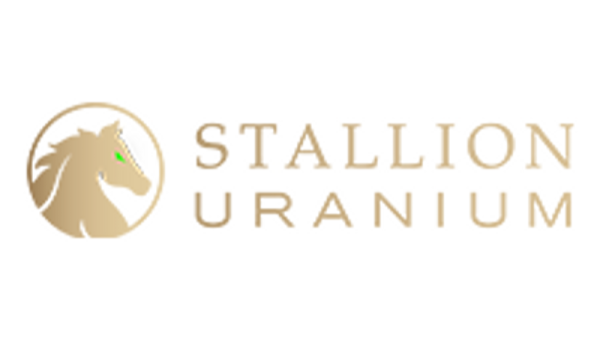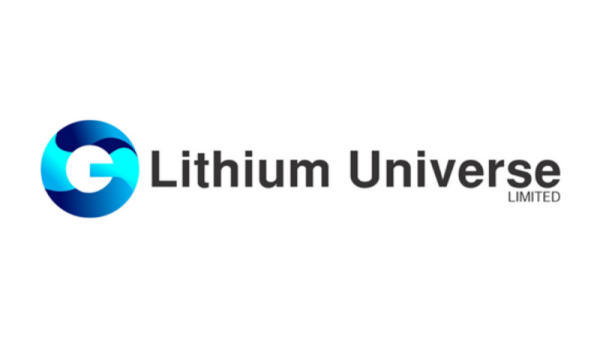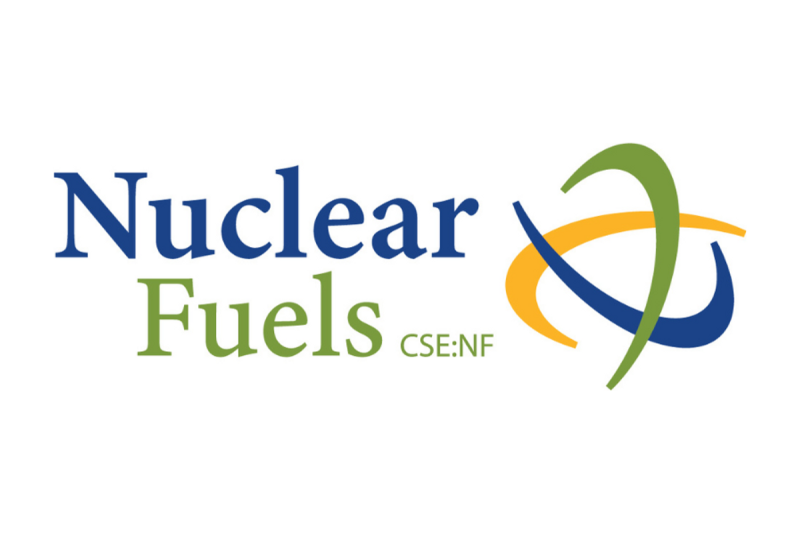Overview
Nuclear Fuels (CSE:NF, OTCQX:NFUNF) is a uranium exploration company focused on the Kaycee Uranium Project in Wyoming.
The company’s flagship Kaycee Project is located in Wyoming’s Powder River Basin, with the goal to advance the project to production. With existing historic resources of nearly 2.5 million pounds (Mlbs) of uranium, the project has the potential to become a large-scale uranium producer. A 200-hole drill program is currently underway at the Kaycee Project.
Wyoming is the USA’s leading uranium-producing state, home to the largest known uranium ore reserves in the US. Wyoming is also a jurisdiction that supports energy development, being among a handful of US states with an ‘Agreement State’ status, which provides for a “one-window” streamlined permitting program for new uranium projects.
Nuclear Fuel’s Kaycee Project is potentially amenable for in-situ recovery (ISR) extraction technology, an environmentally responsible and economically superior uranium extraction process, with over 60 percent of all uranium extractions globally using this technology.
In addition to the Kaycee Project, some of the company’s other assets include the Bootheel Project in Wyoming (uranium), the Moonshine Project in Arizona (uranium), and the LAB Project in Labrador (uranium and rare earth elements). Through this portfolio of projects, Nuclear Fuels is confident it can develop a safe, environmentally superior, and reliable source of domestic uranium, thereby reducing foreign supply dependence and ultimately contributing to the global energy transition.
The drill program is underway at Nuclear Fuels’ priority Kaycee Uranium Project
Some of the most important challenges faced by the world today are climate change and energy security. Nuclear energy can play an important role in addressing these concerns.
First, nuclear energy is a clean and carbon-free energy source. It is the largest source of carbon-free electricity in the US, as it generates electricity without harmful pollutants such as nitrogen oxide, sulfur dioxide, particulate matter, or mercury. Second, nuclear energy has a small land footprint meaning it can produce relatively large amounts of power using small land mass. Typically, a 1,000-MW nuclear plant requires around 1 square mile to operate. In comparison, wind farms require 360 times more land area to produce the same amount of electricity, and solar photovoltaic plants require 75 times more space, according to the Nuclear Energy Institute. Third, nuclear fuel is extremely energy-dense. For perspective, a 1-inch-tall uranium pellet creates as much energy as 17,000 cubic feet of natural gas, 120 gallons of oil, or 1 ton of coal. Lastly, nuclear energy is relatively safer than other options. It scores very favorably in terms of death rates per unit of electricity production. It has a very low score as compared to a very high score for coal and brown coal.
Given these benefits, the world today is experiencing a nuclear renaissance. Roughly 200 nuclear reactors are currently under construction or planned – an increase of more than 40 percent of the currently operating nuclear fleet. In Japan, 10 reactors have restarted, and 16 additional reactors have applied for restarts. Likewise, the UK plans to build eight new nuclear reactors to increase its energy production. Moreover, the US has a heavy reliance on nuclear energy. Approximately 20 percent of electricity generated in the US comes from nuclear energy sources, according to data from the US Department of Energy. However, about 95 percent of the uranium that fuels America’s nuclear reactors is imported. The continued increase in the price of uranium is fueling the drive to accelerate uranium exploration in the US to boost domestic production.
To produce large amounts of nuclear energy, the US needs domestically produced uranium fuel. Currently, the majority of uranium is imported from foreign producers such as Russia, Kazakhstan and China. To reduce dependence on foreign uranium supply, the US is seeking to strengthen its domestic supply sources. Nuclear Fuels is well positioned to become a leading domestic supplier of uranium with its flagship project, the Kaycee Project in Wyoming.
Wyoming is a proven and effective uranium permitting jurisdiction. Its status as an Agreement State ensures permitting and advancing uranium projects are more efficient and streamlined compared to most other states. It is also important to note that most uranium production in Wyoming, especially in the Powder River Basin, involves the ISR extraction method. Wyoming hosts at least 10 ISR operations that have produced more than 45 Mlbs of U3O8.
What is in-situ recovery?
In-situ recovery (ISR) offers a minimally intrusive, eco-friendly and economically competitive approach to mineral extraction. It’s been proven a successful technique for obtaining uranium, especially from lower-grade deposits that might not warrant conventional open pit or underground mining due to costs. Unlike traditional mining, ISR doesn’t involve open pits, waste dumps or tailings, making it more environmentally considerate. This method also streamlines the permitting, development and remediation processes. With ISR, uranium is extracted without disturbing the surface, and once the process is complete, the land is restored to its original state and purpose.
Since its appearance in the 1960s, ISR technology has evolved significantly. Today, it’s a controllable, safe and benign uranium production method that is highly regulated in the US. Today, ISR accounts for about 70 percent of global uranium production. Some nations, like Kazakhstan and Australia, still employ strong chemicals like sulfuric acid for extraction. Many companies in the US opt for a mix of oxygen and sodium bicarbonate in the local groundwater, which extracts uranium with minimal environmental impact and at a near-neutral pH.
With ISR, uranium extraction is accomplished in liquid form through injection and recovery wells. Oxygen is injected with water and no toxic chemicals are used. Compared to conventional mining, it saves a significant amount of water. The use of this technology leads to minimal surface disruption, no tailings and no waste piles. Land and water revert to the original use category once the extraction is completed.
Company Highlights
Nuclear Fuels is a uranium exploration company focused on district-scale in-situ recovery (ISR) projects in proven and prolific jurisdictions such as Wyoming. The company is focused on its flagship Kaycee Uranium Project, located in Wyoming’s Powder River Basin. Their goal is to prove up known historic resource and work towards a 43-101 compliant resource of 15 million pounds of uranium. The inaugural 200-hole drill program is currently underway at the Kaycee Project.Positive drill results at Kaycee Project to date, including multiple uranium intercepts of ore-grade thickness and high-grade mineralization showing potential for ISR extraction. Wyoming is the leading uranium-producing state in the US, home to the largest known uranium ore reserves in the country. It is also a jurisdiction that supports energy development, being among a handful of US states with an ‘Agreement State’ status, which provides a streamlined permitting program for new uranium projects. Nuclear Fuels acquired the Kaycee Project from enCore Energy which retains back-in right for a 51 percent stake in the project by paying 2.5 times the exploration expenditures and carrying it to production in case of any major discovery at Kaycee. This provides Nuclear Fuels with a pathway to production.The company is focused on exploring for uranium that is amenable to ISR technology, a process that is environmentally responsible and economically superior. It extracts the uranium in a non-invasive process through the use of natural groundwater and oxygen, coupled with a proven ion exchange process, to recover the uranium. enCore Energy Corp. is the company’s largest shareholder with a 19.9 percent stake, while management and other insiders hold approximately a 10 percent stake. The company is led by industry experts with extensive experience and credentials in uranium exploration and development, and all aspects of ISR uranium operations.In the rising global demand for carbon-free sources of energy production, Nuclear Fuels is well positioned to provide a reliable supply of domestic uranium and critical metal resources.The US is the world’s largest consumer of nuclear energy, with 20 percent of its electric grid fueled by nuclear energy, yet most of its uranium fuel is imported.Uranium prices continue to rise as the shortage of uranium supplies for the West continues to grow
Key Project
Kaycee Project, Wyoming
The Kaycee Project is the company’s flagship asset. It is the largest ISR exploration project located in Wyoming’s Powder River Basin (PRB) and covers a 33-mile mineralized trend with over 110 miles of identified roll fronts and consists of more than 42 square miles of mineral rights. The project comprises three historically productive sandstone formations – Wasatch, Fort Union and Lance – that are mineralized and potentially amenable to ISR extraction. For the first time since the 1980s, the Kaycee Project is now held by a single company.
With over 3,800 drill holes, historic drilling has confirmed uranium mineralization in all three historically productive sandstones within the PRB, occurring over more than 1,000 feet of vertical section. The majority of the project is not well-explored, with drilling concentrated on approximately 10 percent of the area. The company has begun a 200-hole drill program focused on confirming and expanding historic uranium drill intersections as well as identifying new high-priority targets. The first phase of the current drill program is focused on the Saddle Zone which hosts a historic resource of 519,000 lbs. The initial results from the first 12 holes of the program have been encouraging. High-grade mineralization was encountered in five holes with grade thickness (GT) ranging from 0.441 to 0.908. The highest-grade intercept is 3 feet of 0.240 percent eU3O8. Five holes have a GT of >0.3 which is considered suitable for inclusion in a wellfield.
Table of Significant Results
Drill holes reported returned significant zones of uranium mineralization with >2 ft thickness at or above a grade cut-off of 0.02 percent eU3O8.Percent eU3O8 is a measure of gamma intensity from a decay product of uranium and is not a direct measurement of uranium. Numerous comparisons of eU3O8 and chemical assays of Powder River Basin core samples indicate that eU3O8 is a reasonable indicator of the actual uranium assay. Grade thickness, or GT, is defined as the product of the mineral grade multiplied by the thickness of the mineralization.Bold type represents potentially ISR recoverable uranium with a GT of >0.3 which is considered suitable for inclusion in a wellfield.
Nuclear Fuels acquired this project from enCore Energy Corp., which retains a back-in right for 51 percent of the project by paying 2.5 times the exploration costs and carrying the project to production upon Nuclear Fuels establishing a minimum of an NI 43-101 compliant resource of 15 Mlbs U3O8. This provides a clear path to production in case of major discovery at Kaycee.
Other Projects
Bootheel Project, Wyoming
This project is in Southeast Wyoming and consists of roll-front mineralized zones identified in three distinct, stacked sandstone formations. Historic metallurgical testing has indicated better-than-average uranium recovery kinetics and aquifer rehabilitation. A historic NI 43-101 report in 2007, includes an indicated resource of 1.443 million (Mt) @ 0.038 percent U3O8 for 1.089 Mlbs U3O8, and inferred resource of 4.399 Mt @ 0.037 percent U3O8 for 3.249 Mlbs U3O8.
Bobcat Uranium Project, Wyoming
This project is located in the Shirley Basin, 25 miles south of Casper, Wyoming in Albany County. The Shirley Basin was a proven and prolific producer of uranium credited with over 84 million pounds produced between 1959 and 1992 from producers including Getty Oil Company, Texaco, Pathfinder Mines Corporation, and Cogema Mining. Moreover, the Shirley Basin was home to the first commercial use of the ISR technique to extract uranium from sandstone-host deposits.
Moonshine Project, Arizona
The Moonshine Springs Project is located in Mohave County, Arizona. The project comprises approximately 1,000 acres, including 23 owned lode mining claims along with seven lode mining claims and 320 acres of fee land held under lease. This property was earlier explored during the 1970s and 1980s by Exxon Corp and later by Pathfinder.
This project consists of at least three stratigraphic zones, where the sandstone-hosted uranium occurs. The upper two zones lie at an average depth of 170 feet and are considered open pit candidates with the lower zone lying at a depth of 760 feet. The project is amenable to ISR with a historic resource of 2.4 Mlbs grading 0.16 percent U3O8. The company is currently working on a drill plan and permitting for drilling in 2024. The aim is to establish an NI 43-101 compliant resource.
LAB Project, Labrador
This project has the potential for uranium outcrop grades up to 6.7 percent and numerous highly enriched rare earth element occurrences along the 112-kilometer trend.
Initial exploration work is planned to follow up on significant uranium targets discovered in 2009. Results are pending from the 2023 snow machine-based scintillometer survey and sampling program, and subsequent and ongoing helicopter-based prospect and sampling program.
Lisbon Valley Project, Utah
This project is in the Lisbon Valley Uranium District in Southeast Utah and covers approximately 2,211 acres. The project has two claim blocks – LS and JB. The LS claim group is located southeast and adjacent to the Lisbon mine, which was operational between 1972 and 1988, producing approximately 22 Mlbs of U3O8. Historical drilling at LS claim dating back to 2007 reported uranium mineralization amounting to 17.5 feet grading 0.11 percent U3O8.
Management Team
William M. Sheriff – Chairman
William Sheriff is the founder and presently serves as the executive chair of enCore Energy Corp., a leader in ISR uranium production. He was a pioneer in the uranium renaissance as co-founder and chairman of Energy Metals, which was acquired by Uranium One for $1.8 billion and owns the largest domestic uranium resource base in US history.
Michael Collins – Director and Chief Executive Officer
Michael Collins is a certified professional geoscientist with more than 20 years of public market experience. He founded Bluerock Resources, which was the only new uranium producer in the 2000-2008 uranium cycle in the US southwest. He also has a depth of experience in permitting and feasibility studies, managing development projects and mine optimization programs.
Eugene Spiering – Director
Eugene Spiering is a registered geologist with more than 30 years of experience and recently served as VP of exploration for Quaterra Resources, where he led the discovery of the only two uranium deposits in Arizona. He has also worked on the Kaycee Uranium District in the early 1980s.
David Miller – Director
David Miller is a businessman, professional economic geologist, and a past member of the Wyoming State Legislature. He previously served as the chief executive officer of Strathmore Minerals before its merger with Energy Fuels in 2013. His career has spanned more than 40 years and started with Utah International in the US, which evolved into Orano Group, the French nuclear power conglomerate.
Larry Lahusen – Director
Larry Lahusen holds a BSc in geology from the University of New Mexico (1969) and has been active as an exploration geologist for more than 30 years. He began his career exploring for uranium deposits in the Colorado Plateau region in the US. He has directed and designed exploration programs that resulted in the discovery and subsequent development of the two uranium deposits located in the Lisbon Valley District, Utah.
Rich Munson – Director
Rich Munson has been active in the natural resources business for more than 35 years, starting as a natural resources lawyer specializing in taxation. He moved to the private sector in the mid-80s when he joined the Energy Fuels companies owned by John Adams. Energy Fuels Nuclear became the largest US uranium producer in the late 1980s and early 1990s. In 1999, Munson and John Adams co-founded ETK, which then owned the Toroparu gold-copper project in Guyana, South Africa. Munson continues to be active in the international resource sector.
Monty Sutton – Chief Financial Officer
As a senior management accountant, Monty Sutton has gained in-depth experience in cost analysis as well as system design and implementation. He has also spent 15 years as an investment advisor, trader and insurance specialist with PI Financial in Vancouver, raising over $100 million for junior companies.
Mark Travis – Project Manager
Mark Travis has over 17 years of mineral industry experience in a variety of different settings including both energy and precious metals. He was instrumental in the Strathmore Minerals development of the Gas Hills Wyoming properties during the 2006-2013 uranium cycle. He is the director of both the Geological Society of Nevada as well as the Nevada Mineral Exploration Coalition and is a certified professional geologist through AIPG.





























